Don't wanna be here? Send us removal request.
Text
Fighter Jets: The Pinnacle of Aerial Combat
Fighter jets are among the most advanced and powerful aircraft in the world. Designed primarily for air-to-air combat, these aircraft also possess significant capabilities for air-to-ground strikes, electronic warfare, and reconnaissance. The development and deployment of fighter jets are pivotal to national defense strategies, making them a key component of modern military forces.

Historical Evolution
The history of fighter jets dates back to World War I when biplanes equipped with machine guns engaged in dogfights. The interwar period saw significant advancements, leading to the development of more powerful, faster, and more agile aircraft. World War II was a transformative era, with the introduction of iconic fighters like the Supermarine Spitfire and the Messerschmitt Bf 109. These aircraft played critical roles in various theaters of the war, demonstrating the importance of air superiority.
The jet age began in the closing stages of World War II with the German Messerschmitt Me 262, the first operational jet-powered fighter aircraft. The post-war period saw rapid advancements in jet technology, leading to the development of supersonic jets such as the F-86 Sabre and the MiG-15, which clashed in the Korean War.
Modern Fighter Jets
Today, modern fighter jets are highly sophisticated machines equipped with advanced avionics, stealth technology, and powerful engines. Fifth-generation fighters like the F-22 Raptor and F-35 Lightning II incorporate stealth capabilities, sensor fusion, and advanced avionics to maintain air superiority. These aircraft can engage multiple targets simultaneously and operate in contested environments with minimal risk of detection.
Roles and Capabilities
Fighter jets perform various roles, including:
Air Superiority: Dominating the airspace to prevent enemy aircraft from gaining control.
Multirole: Capable of performing multiple missions, such as the F-16 Fighting Falcon, which can conduct air-to-air combat and ground attacks.
Electronic Warfare: Equipped with systems to jam enemy radar and communications, like the EA-18G Growler.
Reconnaissance: Gathering intelligence using advanced sensors and cameras.
Uncrewed Aerial Vehicles (UAVs): Revolutionizing Warfare
Uncrewed Aerial Vehicles (UAVs), commonly known as drones, have revolutionized modern warfare by providing new capabilities for surveillance, reconnaissance, and combat without risking human lives. UAVs range from small, hand-launched models to large, high-altitude systems capable of carrying significant payloads.
Types and Uses
UAVs can be classified into several categories based on their size, range, and capabilities:
Micro and Mini UAVs: Small drones used for close-range reconnaissance and surveillance. Examples include the Black Hornet Nano.
Tactical UAVs: Medium-sized drones like the RQ-7 Shadow, used for battlefield intelligence and target acquisition.
Strategic UAVs: Large drones such as the RQ-4 Global Hawk, designed for long-endurance missions, providing wide-area surveillance and intelligence.
Combat UAVs: Armed drones like the MQ-9 Reaper, capable of conducting precision strikes against ground targets.
Technological Advancements
UAV technology has advanced significantly in recent years, with improvements in autonomy, endurance, and payload capabilities. Key advancements include:
Autonomy: Integration of AI and machine learning enables UAVs to perform complex missions with minimal human intervention.
Endurance: Solar-powered UAVs, like the Zephyr, offer extended flight times, providing continuous surveillance.
Swarm Technology: Multiple UAVs operating collaboratively to overwhelm defenses and perform coordinated tasks.
Single-Engine Fighter Aircraft: Balancing Cost and Performance
Single-engine fighter aircraft are valued for their cost-effectiveness, ease of maintenance, and versatility. These aircraft have played crucial roles in air forces worldwide, providing a balance between performance and operational costs.
Historical Context
Historically, single-engine fighters like the P-51 Mustang and the Supermarine Spitfire were instrumental during World War II, offering exceptional speed, agility, and firepower. These aircraft were pivotal in achieving air superiority and supporting ground forces in various campaigns.
Modern Single-Engine Fighters
Modern single-engine fighters, such as the F-16 Fighting Falcon and the JAS 39 Gripen, continue to be the workhorses of many air forces. These aircraft are equipped with advanced avionics, radar systems, and precision weapons, making them highly effective in a range of combat scenarios.
F-16 Fighting Falcon: Known for its agility and versatility, the F-16 can perform air-to-air and air-to-ground missions with equal proficiency. It is widely used by numerous air forces around the world.
JAS 39 Gripen: This Swedish fighter is renowned for its cost-effectiveness and advanced technology. The Gripen is designed for quick turnaround and high sortie rates, making it a highly efficient combat aircraft.
Advantages
Single-engine fighters offer several advantages:
Cost-Effectiveness: Lower production and operational costs compared to twin-engine fighters.
Ease of Maintenance: Simpler engine systems reduce maintenance time and costs.
Versatility: Capable of performing a wide range of missions, making them adaptable to various combat scenarios.
Tempest Fighter Aircraft: The Future of Aerial Warfare
The Tempest fighter aircraft represents the future of aerial combat. Developed by the UK's BAE Systems in collaboration with Italy’s Leonardo and Sweden’s Saab, the Tempest is a sixth-generation fighter jet designed to address emerging threats and leverage cutting-edge technology.
Design and Features
The Tempest features a stealthy design aimed at reducing radar cross-section and enhancing survivability in contested environments. It is expected to incorporate advanced materials and coatings to minimize detectability. The aircraft will also employ adaptive cycle engines, providing greater fuel efficiency and thrust across a wide range of operating conditions.
Technological Innovations
The Tempest program emphasizes several key technological innovations:
Artificial Intelligence: AI will play a significant role in the Tempest, assisting pilots in decision-making, threat detection, and mission planning. This will reduce the cognitive workload on pilots and enhance overall mission effectiveness.
Autonomous Systems: The Tempest will be capable of operating in both manned and unmanned configurations. Autonomous systems will enable it to conduct missions independently or in coordination with other UAVs.
Advanced Sensors: A cutting-edge sensor suite, including multi-spectral sensors, will provide enhanced situational awareness and target detection capabilities.
Directed Energy Weapons: The integration of directed energy weapons, such as lasers, is being explored for their potential to counter missile threats and engage enemy aircraft.
International Collaboration
The Tempest program underscores the importance of international collaboration in modern defense projects. By pooling resources and expertise, the UK, Italy, and Sweden aim to develop a fighter jet that meets their collective defense needs while remaining adaptable to future technological advancements. This collaborative approach also ensures the sharing of costs and risks associated with developing such an advanced aircraft.
Conclusion
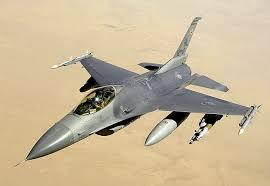
The domains of fighter jets, uncrewed aerial vehicles, and single-engine fighter aircraft are continually evolving, driven by technological advancements and changing military requirements. The Tempest fighter aircraft epitomizes the future of air combat, blending cutting-edge technology with international collaboration. As these technologies progress, they will redefine air superiority, providing nations with the tools needed to address emerging threats and maintain strategic advantages in an increasingly complex global landscape. From the historical evolution of fighter jets to the revolutionary capabilities of UAVs and the balanced performance of single-engine fighters, the advancement in aerial combat technology continues to shape the future of military aviation.
0 notes
Text
Fighter Jets: The Backbone of Modern Air Combat
Fighter jets have been the cornerstone of air superiority since their inception during World War I. These high-performance military aircraft are designed for air-to-air combat against other aircraft, as well as ground-attack missions and reconnaissance. The evolution of fighter jets has seen significant advancements in speed, maneuverability, and technology, making them integral to modern air forces.

Evolution and Technology
The development of fighter jets began with propeller-driven aircraft in the early 20th century. The transition to jet engines in the latter half of World War II marked a significant leap in aviation technology. The introduction of the Messerschmitt Me 262 by Germany, the world’s first operational jet-powered fighter aircraft, revolutionized air combat. Post-war, advancements continued with the creation of the supersonic jet era, exemplified by aircraft such as the F-86 Sabre and the MiG-15.
Modern fighter jets are characterized by their advanced avionics, stealth capabilities, and sophisticated weapon systems. The integration of fly-by-wire systems, which replace manual controls with electronic interfaces, enhances maneuverability and safety. Stealth technology, as seen in aircraft like the F-22 Raptor and the F-35 Lightning II, minimizes radar cross-sections, allowing these jets to evade detection and strike with precision.
Roles and Capabilities
Fighter jets serve multiple roles in military operations. Air superiority fighters, like the F-15 Eagle and the Su-35, are designed to establish control of the airspace by destroying enemy aircraft. Multirole fighters, such as the F-16 Fighting Falcon and the Eurofighter Typhoon, can perform a variety of missions, including air-to-air combat, ground attack, and electronic warfare.
The development of fifth-generation fighters, including the F-22 and F-35, has introduced capabilities such as network-centric warfare, advanced sensor fusion, and enhanced survivability. These aircraft are equipped with state-of-the-art radar, communication systems, and weapons, providing unmatched situational awareness and combat effectiveness.
Uncrewed Aerial Vehicles (UAVs): The Future of Air Warfare
Uncrewed Aerial Vehicles (UAVs), also known as drones, have become a critical component of modern military operations. UAVs offer several advantages over manned aircraft, including reduced risk to human life, lower operational costs, and the ability to operate in environments deemed too dangerous for piloted aircraft.
Types and Uses
UAVs come in various shapes and sizes, tailored to specific missions. Tactical UAVs, such as the RQ-7 Shadow, are used for reconnaissance and surveillance, providing real-time intelligence to ground forces. Strategic UAVs, like the RQ-4 Global Hawk, can fly at high altitudes for extended periods, offering wide-area surveillance and monitoring.
Combat UAVs, such as the MQ-9 Reaper, are equipped with precision-guided munitions and can conduct airstrikes against high-value targets. These drones are instrumental in counterterrorism operations, allowing for targeted strikes while minimizing collateral damage. The use of UAVs extends beyond military applications to include disaster relief, environmental monitoring, and search and rescue operations.
Technological Advancements
Advancements in UAV technology have focused on improving autonomy, endurance, and payload capacity. Artificial intelligence (AI) and machine learning algorithms are being integrated into UAV systems, enabling greater autonomy in navigation, target identification, and decision-making. Swarm technology, where multiple UAVs operate collaboratively, is being explored for its potential to overwhelm enemy defenses and conduct complex missions.
The development of solar-powered UAVs, such as the Zephyr, aims to achieve near-perpetual flight, significantly enhancing surveillance and reconnaissance capabilities. Additionally, advancements in miniaturization have led to the creation of micro and nano drones, which can be used for covert operations and intelligence gathering in urban environments.
Single-Engine Fighter Aircraft: Balancing Performance and Cost
Single-engine fighter aircraft have been a staple in military aviation due to their cost-effectiveness, ease of maintenance, and versatility. These aircraft are designed to deliver high performance while being more affordable and simpler to operate than their twin-engine counterparts.
Historical Significance
Historically, single-engine fighters like the P-51 Mustang and the Spitfire played pivotal roles during World War II, offering a balance of speed, agility, and firepower. These aircraft were instrumental in achieving air superiority and supporting ground forces.
In the post-war era, aircraft like the F-16 Fighting Falcon and the JAS 39 Gripen have continued this legacy. The F-16, in particular, has become one of the most widely used fighter aircraft globally, known for its versatility, ease of upgrade, and exceptional performance.
Modern Capabilities
Modern single-engine fighters incorporate advanced avionics, radar systems, and weapons. The integration of AESA (Active Electronically Scanned Array) radar enhances target detection and tracking capabilities. These aircraft are also equipped with advanced electronic warfare systems, providing robust defense against enemy radar and missile threats.
The development of single-engine stealth fighters, such as the Lockheed Martin F-35A, marks a significant advancement. The F-35A combines stealth, sensor fusion, and network-centric capabilities, making it a formidable asset in both air-to-air and air-to-ground missions.
Tempest Fighter Aircraft: The Future of Air Combat
The Tempest fighter aircraft represents the next generation of air combat capabilities. Developed by the UK’s BAE Systems in collaboration with Italy’s Leonardo and Sweden’s Saab, the Tempest aims to replace the Eurofighter Typhoon by the mid-2030s. This sixth-generation fighter jet is designed to address emerging threats and technological challenges.
Design and Features
The Tempest features a sleek, stealthy design aimed at reducing radar cross-section and enhancing survivability. The aircraft is expected to incorporate advanced materials and coatings to minimize detectability. It will also employ adaptive cycle engines, providing greater fuel efficiency and thrust across a wide range of operating conditions.
Technological Innovations
One of the key innovations of the Tempest is its focus on artificial intelligence and autonomous systems. The aircraft will be capable of operating in both manned and unmanned configurations, with the potential for swarm operations involving multiple UAVs. Advanced AI will assist pilots in decision-making, threat detection, and mission planning, reducing cognitive workload and enhancing mission effectiveness.
The Tempest will also feature a cutting-edge sensor suite, including multi-spectral sensors for enhanced situational awareness. The integration of directed energy weapons, such as lasers, is being explored for their potential to counter missile threats and engage enemy aircraft.
Collaboration and Development
The Tempest program emphasizes international collaboration, leveraging the expertise and technological capabilities of partner nations. The UK, Italy, and Sweden are pooling resources and knowledge to develop a fighter that meets their collective defense needs while remaining adaptable to future technological advancements.
Conclusion

The domains of fighter jets, uncrewed aerial vehicles, and single-engine fighter aircraft are continually evolving, driven by technological advancements and changing military requirements. The Tempest fighter aircraft epitomizes the future of air combat, blending cutting-edge technology with international collaboration. As these technologies progress, they will redefine air superiority, providing nations with the tools needed to address emerging threats and maintain strategic advantages in an increasingly complex global landscape.
0 notes
Text
The Future of IoT: Trends and Predictions
Introduction to IoT

The Internet of Things (IoT) represents a transformative shift in technology, creating a world where everyday objects are interconnected and capable of communicating with each other. This network of interconnected devices, sensors, and systems enables the collection, exchange, and analysis of data, driving efficiency and innovation across various sectors. From smart homes to industrial automation, IoT is reshaping the way we live and work.
IoT-Enabled Products
IoT-enabled products are at the forefront of this technological revolution, bringing intelligence and automation to a wide range of applications. These products can be found in diverse domains, including smart homes, healthcare, transportation, agriculture, and industry.
Smart Homes
In smart homes, IoT-enabled devices enhance comfort, security, and energy efficiency. Smart thermostats like the Nest Thermostat learn user preferences and adjust temperatures automatically, reducing energy consumption. Smart security systems, including cameras and doorbells from companies like Ring, offer real-time monitoring and alerts, ensuring the safety of homes. Other IoT devices such as smart lights, locks, and appliances can be controlled remotely, providing convenience and control to homeowners.
Healthcare
The healthcare sector is experiencing significant benefits from IoT through devices that enable remote monitoring and telemedicine. Wearable health monitors, such as Fitbit and Apple Watch, track vital signs and physical activity, providing valuable data to both users and healthcare providers. IoT-enabled medical devices, such as insulin pumps and connected inhalers, facilitate better management of chronic diseases, improving patient outcomes. These devices can transmit data to healthcare providers in real-time, enabling timely interventions and personalized care.
Transportation
IoT is transforming transportation with innovations such as connected cars, fleet management systems, and smart traffic management. Connected vehicles from manufacturers like Tesla and Ford are equipped with sensors and software that enable autonomous driving, real-time diagnostics, and over-the-air updates. Fleet management solutions optimize routes and maintenance schedules, enhancing efficiency and reducing costs. Smart traffic systems use IoT sensors to monitor traffic flow and manage congestion, improving urban mobility.
Agriculture
In agriculture, IoT facilitates precision farming through devices that monitor soil conditions, weather patterns, and crop health. Drones and automated machinery equipped with IoT sensors ensure optimal planting, watering, and harvesting, increasing yields and reducing waste. Companies like John Deere are pioneering smart agricultural equipment that leverages IoT for better farm management, enabling farmers to make data-driven decisions that enhance productivity and sustainability.
Industrial Applications
The industrial sector benefits greatly from IoT through smart factories and Industry 4.0. IoT-enabled machinery and sensors monitor equipment health, predict failures, and optimize production processes. This leads to increased efficiency, reduced downtime, and lower operational costs. Siemens and GE are at the forefront of integrating IoT into industrial operations, creating more responsive and adaptive manufacturing environments that can quickly adjust to changing demands and conditions.
Technologies Behind IoT
The successful deployment of IoT relies on several key technologies that enable connectivity, data collection, and analysis.
Sensors and Actuators
Sensors are the fundamental components of IoT devices, gathering data from the environment. They come in various types, including temperature sensors, motion detectors, and pressure sensors. Actuators, on the other hand, enable devices to interact with their surroundings by executing physical actions, such as opening a valve or turning on a light. Together, sensors and actuators form the backbone of IoT systems, providing the necessary inputs and outputs for automated processes.
Connectivity
Reliable and robust connectivity solutions are essential for IoT devices to communicate with each other and central systems. Various communication protocols and networks are used, including Wi-Fi, Bluetooth, Zigbee, LoRaWAN, and 5G. Each has its own strengths and applications, ranging from short-range, low-power communications to long-range, high-speed data transfer. The choice of connectivity depends on factors such as the range, data rate, and power requirements of the IoT application.
Edge Computing
Edge computing processes data closer to where it is generated, reducing latency and bandwidth usage. This is crucial for real-time applications like autonomous driving and industrial automation, where immediate decision-making is required. By processing data locally, edge devices can respond more quickly and reliably than if they had to rely solely on cloud computing. Edge computing also enhances privacy and security by keeping sensitive data within the local network.
Cloud Computing
Cloud computing provides the infrastructure for storing, processing, and analyzing vast amounts of data generated by IoT devices. It offers scalability and flexibility, enabling businesses to manage their IoT deployments effectively. Platforms like Amazon Web Services (AWS) IoT, Microsoft Azure IoT, and Google Cloud IoT provide comprehensive solutions for managing IoT ecosystems. Cloud computing enables centralized data analysis and visualization, facilitating insights and decision-making.
Artificial Intelligence and Machine Learning
Artificial intelligence (AI) and machine learning (ML) are integral to IoT, allowing devices to learn from data and make intelligent decisions. Predictive maintenance, anomaly detection, and autonomous operations are some of the capabilities enabled by AI and ML. These technologies transform raw data into actionable insights, driving innovation and efficiency across various sectors. For example, AI algorithms can analyze sensor data to predict equipment failures, enabling proactive maintenance and reducing downtime.
Leading IoT Manufacturers
Numerous companies are driving the development and deployment of IoT technologies, each contributing to the ecosystem with their unique offerings.
Cisco
Cisco is a global leader in networking and cybersecurity solutions, playing a crucial role in the IoT landscape. Their IoT solutions encompass connectivity, security, and analytics, providing a comprehensive framework for managing IoT devices and data. Cisco's IoT portfolio includes industrial networking, edge computing, and cybersecurity products designed to support various industries. Their expertise in networking ensures reliable and secure communication between IoT devices.
IBM
IBM's IoT solutions leverage their expertise in AI and cloud computing to deliver innovative applications for smart cities, industrial automation, and more. The IBM Watson IoT platform provides powerful tools for connecting, managing, and analyzing IoT data, enabling businesses to harness the full potential of their IoT deployments. IBM's AI capabilities enhance the intelligence of IoT systems, enabling advanced analytics and decision-making.
Intel
Intel is at the forefront of IoT innovation with its range of processors, modules, and solutions designed for IoT applications. Intel's IoT products are used in various sectors, including healthcare, retail, and industrial automation, providing the computational power and connectivity needed for advanced IoT systems. Intel's edge computing solutions enable real-time data processing and analysis, enhancing the performance of IoT applications.
Siemens
Siemens is a pioneer in industrial IoT, offering solutions that integrate hardware, software, and services to optimize manufacturing processes. Their MindSphere platform is a leading industrial IoT as a service (SaaS) solution, enabling businesses to connect their machines and products to the digital world and harness the power of data analytics. Siemens' expertise in industrial automation ensures seamless integration of IoT technologies into manufacturing environments.
Google
Google's contributions to IoT are centered around its cloud services and AI capabilities. Google Cloud IoT offers a suite of tools for managing IoT devices and data, integrating seamlessly with Google's AI and machine learning services. This allows businesses to build intelligent, data-driven IoT applications with ease. Google's cloud infrastructure provides scalability and reliability, supporting large-scale IoT deployments.
Challenges and Future Prospects
While IoT presents immense opportunities, it also poses several challenges. Security and privacy are paramount concerns, as the proliferation of connected devices increases the risk of cyberattacks and data breaches. Ensuring robust security measures and protecting user data are critical for the continued growth and acceptance of IoT. Implementing encryption, authentication, and access control mechanisms are essential to safeguard IoT systems.
Interoperability and standardization are other significant challenges, as the vast array of devices and protocols can lead to compatibility issues. Developing common standards and frameworks is essential to ensure seamless integration and communication between different IoT systems. Industry collaboration and adherence to standardized protocols can facilitate interoperability and enhance the scalability of IoT solutions.
Looking ahead, the future of IoT is promising, with advancements in technologies like 5G, AI, and edge computing driving further innovation. The ongoing development of smart cities, autonomous vehicles, and industrial automation will continue to expand the scope and impact of IoT, making our world more connected and intelligent. IoT will play a crucial role in addressing global challenges such as climate change, healthcare, and urbanization, driving sustainable development and improving quality of life.
Conclusion

The Internet of Things is a transformative force, reshaping industries and improving lives through connectivity and data-driven insights. IoT-enabled products, powered by advanced technologies and driven by leading manufacturers, are paving the way for a smarter, more efficient future. As the IoT ecosystem continues to evolve, addressing challenges and leveraging new opportunities will be key to unlocking its full potential. The integration of IoT with emerging technologies will further enhance its capabilities, driving innovation and creating new possibilities for businesses and consumers alike.
0 notes
Text
The Internet of Things (IoT): A Revolution in Connectivity and Innovation
Introduction

Introduction to IoT
The Internet of Things (IoT) represents a paradigm shift in technology, bringing about a world where devices, sensors, and systems are interconnected, enabling them to collect and exchange data. This interconnected network of "things" encompasses a vast array of objects from everyday household items to complex industrial machinery. The advent of IoT has revolutionized numerous sectors, driving innovation and efficiency while transforming how we interact with technology.
IoT-Enabled Products
IoT-enabled products are the tangible manifestations of this technology, designed to bring convenience, automation, and intelligence to various aspects of life. These products span numerous categories, including smart homes, healthcare, transportation, agriculture, and industrial applications.
Smart Homes
In the realm of smart homes, IoT-enabled devices such as smart thermostats, security systems, lighting, and appliances enhance comfort, security, and energy efficiency. Products like the Nest Thermostat learn user preferences and adjust temperatures accordingly, while smart security cameras and doorbells from companies like Ring offer real-time monitoring and alerts, ensuring safety.
Healthcare
The healthcare sector benefits immensely from IoT through devices that enable remote monitoring and telemedicine. Wearable health monitors, like the Fitbit and Apple Watch, track vital signs and physical activity, providing valuable data for both users and healthcare providers. IoT-enabled medical devices such as insulin pumps and connected inhalers ensure better management of chronic diseases, improving patient outcomes.
Transportation
IoT's impact on transportation is profound, with innovations like connected cars, fleet management systems, and smart traffic management. Connected vehicles from manufacturers like Tesla and Ford are equipped with sensors and software that enable autonomous driving, real-time diagnostics, and over-the-air updates. Fleet management solutions optimize routes and maintenance schedules, enhancing efficiency and reducing costs.
Agriculture
In agriculture, IoT facilitates precision farming through devices that monitor soil conditions, weather patterns, and crop health. Drones and automated machinery equipped with IoT sensors ensure optimal planting, watering, and harvesting, increasing yields and reducing waste. Companies like John Deere are pioneering smart agricultural equipment that leverages IoT for better farm management.
Industrial Applications
The industrial sector sees significant advancements through IoT in the form of smart factories and Industry 4.0. IoT-enabled machinery and sensors monitor equipment health, predict failures, and optimize production processes. This leads to increased efficiency, reduced downtime, and lower operational costs. Siemens and GE are at the forefront of integrating IoT into industrial operations, creating more responsive and adaptive manufacturing environments.
Technologies Behind IoT
The successful implementation of IoT relies on several key technologies that enable connectivity, data collection, and analysis.
Sensors and Actuators
Sensors are the eyes and ears of IoT devices, gathering data from the environment. They come in various types, including temperature sensors, motion detectors, and pressure sensors. Actuators, on the other hand, enable devices to interact with their surroundings by executing physical actions, such as turning on a light or opening a valve.
Connectivity
IoT devices require robust and reliable connectivity solutions to communicate with each other and central systems. This is facilitated by various communication protocols and networks, including Wi-Fi, Bluetooth, Zigbee, LoRaWAN, and 5G. Each has its own strengths and applications, from short-range, low-power communications to long-range, high-speed data transfer.
Edge Computing
Edge computing processes data closer to where it is generated, reducing latency and bandwidth usage. This is crucial for real-time applications like autonomous driving and industrial automation, where immediate decision-making is required. By processing data locally, edge devices can respond more quickly and reliably than if they had to rely solely on cloud computing.
Cloud Computing
Cloud computing provides the infrastructure for storing, processing, and analyzing vast amounts of data generated by IoT devices. It offers scalability and flexibility, enabling businesses to manage their IoT deployments effectively. Platforms like Amazon Web Services (AWS) IoT, Microsoft Azure IoT, and Google Cloud IoT provide comprehensive solutions for managing IoT ecosystems.
Artificial Intelligence and Machine Learning
Artificial intelligence (AI) and machine learning (ML) are integral to IoT, allowing devices to learn from data and make intelligent decisions. Predictive maintenance, anomaly detection, and autonomous operations are some of the capabilities enabled by AI and ML. These technologies transform raw data into actionable insights, driving innovation and efficiency across various sectors.
Leading IoT Manufacturers
Numerous companies are driving the development and deployment of IoT technologies, each contributing to the ecosystem with their unique offerings.
Cisco
Cisco is a global leader in networking and cybersecurity solutions, playing a crucial role in the IoT landscape. Their IoT solutions encompass connectivity, security, and analytics, providing a comprehensive framework for managing IoT devices and data. Cisco's IoT portfolio includes industrial networking, edge computing, and cybersecurity products designed to support various industries.
IBM
IBM's IoT solutions leverage their expertise in AI and cloud computing to deliver innovative applications for smart cities, industrial automation, and more. IBM Watson IoT platform provides powerful tools for connecting, managing, and analyzing IoT data, enabling businesses to harness the full potential of their IoT deployments.
Intel
Intel is at the forefront of IoT innovation with its range of processors, modules, and solutions designed for IoT applications. Intel's IoT products are used in various sectors, including healthcare, retail, and industrial automation, providing the computational power and connectivity needed for advanced IoT systems.
Siemens
Siemens is a pioneer in industrial IoT, offering solutions that integrate hardware, software, and services to optimize manufacturing processes. Their MindSphere platform is a leading industrial IoT as a service (SaaS) solution, enabling businesses to connect their machines and products to the digital world and harness the power of data analytics.
Google
Google's contributions to IoT are centered around its cloud services and AI capabilities. Google Cloud IoT offers a suite of tools for managing IoT devices and data, integrating seamlessly with Google's AI and machine learning services. This allows businesses to build intelligent, data-driven IoT applications with ease.
Challenges and Future Prospects
While the IoT presents immense opportunities, it also poses several challenges. Security and privacy are paramount concerns, as the proliferation of connected devices increases the risk of cyberattacks and data breaches. Ensuring robust security measures and protecting user data are critical for the continued growth and acceptance of IoT.
Interoperability and standardization are other significant challenges, as the vast array of devices and protocols can lead to compatibility issues. Developing common standards and frameworks is essential to ensure seamless integration and communication between different IoT systems.
Looking ahead, the future of IoT is promising, with advancements in technologies like 5G, AI, and edge computing driving further innovation. The ongoing development of smart cities, autonomous vehicles, and industrial automation will continue to expand the scope and impact of IoT, making our world more connected and intelligent.
Conclusion
The Internet of Things is a transformative force, reshaping industries and improving lives through connectivity and data-driven insights. IoT-enabled products, powered by advanced technologies and driven by leading manufacturers, are paving the way for a smarter, more efficient future. As the IoT ecosystem continues to evolve, addressing challenges and leveraging new opportunities will be key to unlocking its full potential.
0 notes
Text
Exploring Space: The ISS, Cape Canaveral, Propulsion Systems, and the Boeing Starliner Mission
The pursuit of space exploration has led humanity to achieve remarkable milestones. Among the most notable are the International Space Station (ISS), Cape Canaveral Space Force Station, advancements in propulsion systems, and the significant progress made by the Boeing Starliner mission. Each of these elements represents a critical component of our journey into space, illustrating the collaboration, innovation, and determination that drive our quest to explore the cosmos.

International Space Station: A Beacon of International Collaboration
The International Space Station (ISS) is one of the most significant achievements in human space exploration. Launched in 1998, the ISS is a symbol of international cooperation, involving five space agencies: NASA (United States), Roscosmos (Russia), JAXA (Japan), ESA (Europe), and CSA (Canada). This collaborative effort has resulted in a continuously inhabited orbital laboratory that serves as a platform for scientific research and technological development.
The ISS orbits Earth at an average altitude of approximately 420 kilometers, traveling at a speed of around 28,000 kilometers per hour. It provides a unique microgravity environment, allowing scientists to conduct experiments that are not possible on Earth. Research conducted on the ISS spans various fields, including biology, physics, astronomy, and materials science. For example, studies on fluid dynamics in microgravity help scientists understand how liquids behave without the influence of gravity, which has implications for a wide range of applications, from industrial processes to medical treatments.
The ISS also plays a crucial role in studying the effects of long-duration spaceflight on the human body. Astronauts aboard the ISS provide invaluable data on how microgravity impacts bone density, muscle mass, cardiovascular health, and other physiological aspects. This research is essential for preparing future missions to Mars and other distant destinations, where astronauts will need to endure extended periods in space.
Cape Canaveral Space Force Station: The Launchpad of Space Exploration
Cape Canaveral Space Force Station, located on Florida's east coast, has been a cornerstone of American space exploration since the 1950s. Initially known as the Cape Canaveral Air Force Station, it was renamed in 2020 to reflect its mission under the United States Space Force. The station's strategic location near the equator provides an advantage for launching rockets, as it allows them to take advantage of Earth's rotational speed, reducing the amount of fuel needed to reach orbit.
Cape Canaveral has been the launch site for many historic missions, from the early days of the Mercury and Gemini programs to the Apollo missions that landed humans on the Moon. The station continues to be a hub of activity, supporting a wide range of launches, including those by NASA, the United States Department of Defense, and commercial space companies like SpaceX and United Launch Alliance (ULA).
One of the most significant recent developments at Cape Canaveral is the integration of commercial spaceflight operations. The station has been upgraded to accommodate new types of rockets and spacecraft, reflecting the evolving landscape of space exploration. This shift towards commercial spaceflight is exemplified by the Boeing Starliner mission, which marks a significant milestone in the collaboration between NASA and private industry.
Propulsion Systems: The Engine of Space Exploration
Propulsion systems are the backbone of space exploration, enabling spacecraft to overcome Earth's gravity and travel through space. There have been significant advancements in propulsion technology since the early days of spaceflight, leading to more efficient and powerful systems that are critical for current and future missions.
Chemical propulsion is the most common type of propulsion used in space exploration. It involves the combustion of propellants (fuel and oxidizer) to produce high-speed exhaust gases that generate thrust. Liquid-fueled engines, such as those used in SpaceX's Falcon 9 and NASA's Space Launch System (SLS), offer the advantage of throttle control and the ability to be shut down and restarted. Solid rocket motors, used in boosters like those of the Space Shuttle and the SLS, provide high thrust and simplicity but lack throttle control.
Electric propulsion offers a more efficient alternative for deep-space missions. Systems such as ion thrusters use electric fields to accelerate ions to high speeds, producing thrust. Although the thrust generated by electric propulsion is much lower than that of chemical engines, the high efficiency allows spacecraft to operate for extended periods, making them ideal for missions to distant destinations like Mars or the outer planets. The Dawn spacecraft, which explored the asteroids Vesta and Ceres, is a notable example of a mission that successfully utilized electric propulsion.
Nuclear propulsion is an emerging technology that holds great promise for future space exploration. Nuclear thermal propulsion (NTP) uses nuclear reactions to heat a propellant, typically hydrogen, to generate thrust. This method could significantly reduce travel time to Mars, making it a key technology for future crewed missions beyond the Moon. While nuclear propulsion is still in the experimental stage, ongoing research aims to address the technical and safety challenges associated with this powerful propulsion method.
Boeing Starliner: A Milestone in Commercial Spaceflight
The Boeing CST-100 Starliner is a spacecraft developed under NASA's Commercial Crew Program, which aims to enable commercial transportation of astronauts to and from the ISS. The Starliner represents a significant milestone in the shift towards commercial spaceflight, reducing reliance on government-operated vehicles and fostering a competitive space industry.
Designed to accommodate up to seven astronauts, the Starliner is a reusable spacecraft capable of multiple missions. It features advanced avionics, automated docking systems, and a launch escape system to ensure crew safety in the event of an emergency during launch. The development of the Starliner has encountered challenges, including delays and technical issues, but each hurdle has provided valuable lessons that contribute to the overall safety and reliability of the spacecraft.
In December 2019, the Starliner embarked on its first uncrewed test flight, Orbital Flight Test-1 (OFT-1). Although the mission encountered software issues that prevented it from reaching the ISS, it successfully demonstrated many of the spacecraft's capabilities. Following a thorough review and addressing the issues identified during OFT-1, Boeing conducted a second uncrewed test flight, Orbital Flight Test-2 (OFT-2), in May 2022. This mission successfully docked with the ISS, paving the way for future crewed flights.
The first crewed mission of the Starliner, called Crew Flight Test (CFT), is a critical step towards certifying the spacecraft for regular astronaut transport. This mission will test the spacecraft's performance in real-world conditions with astronauts aboard, ensuring all systems function correctly and safely. Success in this mission will mark a significant achievement for Boeing and NASA, furthering the goal of maintaining a continuous American presence on the ISS using commercially operated spacecraft.
Conclusion
The International Space Station, Cape Canaveral Space Force Station, advancements in propulsion systems, and the Boeing Starliner mission are all pivotal elements of contemporary space exploration. The ISS continues to be a hub of scientific innovation and international cooperation, providing invaluable insights into space and human health. Cape Canaveral remains a cornerstone of American space endeavors, launching missions that push the boundaries of human knowledge and capability. Advancements in propulsion systems are essential for reaching farther destinations in our solar system. The Boeing Starliner represents a new era of commercial spaceflight, enhancing our ability to maintain and expand human presence in space.
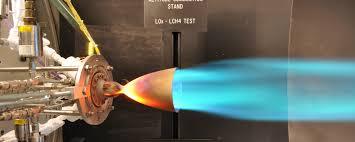
Together, these components highlight the progress and potential of human space exploration, driven by both government agencies and commercial entities, and underscore the collaborative spirit essential for overcoming the challenges of exploring the final frontier.
#International Space Station#Cape Canaveral Naval Space Force Station#propulsion system#Boeing Starliner mission a milestone
0 notes
Text
Milestones in Space Exploration: The ISS, Cape Canaveral, Advanced Propulsion Systems, and the Boeing Starliner
The International Space Station (ISS) stands as a testament to human ingenuity and international collaboration. Orbiting roughly 420 kilometers above Earth, it serves as a microgravity laboratory, hosting cutting-edge research across various scientific disciplines. The ISS is a partnership between space agencies from the United States (NASA), Russia (Roscosmos), Europe (ESA), Japan (JAXA), and Canada (CSA), representing one of the most ambitious and complex engineering projects ever undertaken.
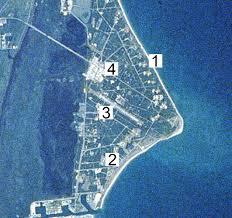
International Space Station: A Hub of Scientific Research
Since its first module, Zarya, launched in 1998, the ISS has expanded to include multiple laboratories, living quarters, and observation decks. This orbital laboratory allows researchers to conduct experiments that are impossible on Earth due to gravity's influence. Studies conducted on the ISS have contributed to our understanding of physics, biology, human health, and materials science. For instance, experiments on fluid dynamics in microgravity help improve our understanding of how liquids behave without gravity, which has implications for numerous industries on Earth.
The ISS also plays a critical role in studying human health in space. Astronauts living on the station for extended periods provide data on how prolonged exposure to microgravity affects the human body. This research is crucial for planning future long-duration missions to the Moon, Mars, and beyond.
Cape Canaveral Space Force Station: The Launchpad of Innovation
Cape Canaveral Space Force Station, located on Florida's east coast, has been at the forefront of American space exploration since the 1950s. Initially known as the Cape Canaveral Air Force Station, it was renamed in 2020 to reflect its transition to a space-centric mission under the United States Space Force. This launch site has seen the liftoffs of historic missions, from the early days of the Mercury and Gemini programs to the Apollo missions that landed humans on the Moon.
Cape Canaveral's strategic location near the equator allows rockets to take advantage of Earth's rotational speed, providing an additional boost during launch. This efficiency is vital for achieving the velocities necessary to reach orbit and beyond. Over the decades, Cape Canaveral has evolved to accommodate a wide range of launch vehicles, from small research rockets to massive heavy-lift launchers.
Propulsion Systems: The Backbone of Space Travel
At the heart of any space mission is its propulsion system, which is responsible for overcoming Earth's gravity and navigating through space. Rocket propulsion has seen significant advancements since the early days of space exploration. Modern propulsion systems can be broadly categorized into chemical, electric, and nuclear propulsion.
Chemical propulsion remains the most common method for launching rockets. It involves the combustion of propellants (fuel and oxidizer) to produce high-speed exhaust gases that propel the rocket forward. Liquid-fueled engines, such as those used in SpaceX's Falcon 9 and NASA's Space Launch System (SLS), offer the advantage of throttle control and the ability to be shut down and restarted. Solid rocket motors, used in boosters like those of the Space Shuttle and the SLS, provide high thrust and simplicity but lack throttle control.
Electric propulsion, such as ion thrusters, offers a more efficient alternative for deep-space missions. These systems use electric fields to accelerate ions to high speeds, producing thrust. While the thrust generated is much lower than chemical engines, the high efficiency allows spacecraft to operate for extended periods, making them ideal for missions to distant destinations like Mars or the outer planets.
Nuclear propulsion represents a promising yet underdeveloped technology. Nuclear thermal propulsion (NTP) uses nuclear reactions to heat a propellant, typically hydrogen, to generate thrust. This method could significantly reduce travel time to Mars, making it a key technology for future crewed missions beyond the Moon.
Boeing Starliner: A Milestone in Commercial Spaceflight
The Boeing CST-100 Starliner is a spacecraft developed under NASA's Commercial Crew Program, which aims to facilitate the transport of astronauts to and from the ISS using commercially operated spacecraft. The Starliner represents a significant milestone in the shift towards commercial spaceflight, reducing reliance on government-operated vehicles and fostering a competitive space industry.
Designed to accommodate up to seven astronauts, the Starliner is a reusable spacecraft capable of multiple missions. It features advanced avionics, automated docking systems, and a launch escape system to ensure crew safety in the event of an emergency during launch. The Starliner's development process has not been without challenges, including delays and technical issues, but each hurdle has provided valuable lessons that contribute to the overall safety and reliability of the spacecraft.
In December 2019, the Starliner embarked on its first uncrewed test flight, Orbital Flight Test-1 (OFT-1). Although the mission encountered software issues that prevented it from reaching the ISS, it successfully demonstrated many of the spacecraft's capabilities. Following a thorough review and addressing the issues identified during OFT-1, Boeing conducted a second uncrewed test flight, Orbital Flight Test-2 (OFT-2), in May 2022. This mission successfully docked with the ISS, paving the way for future crewed flights.
The first crewed mission of the Starliner, called Crew Flight Test (CFT), is a critical step towards certifying the spacecraft for regular astronaut transport. This mission will test the spacecraft's performance in real-world conditions with astronauts aboard, ensuring all systems function correctly and safely. Success in this mission will mark a significant achievement for Boeing and NASA, furthering the goal of maintaining a continuous American presence on the ISS using commercially operated spacecraft.
Conclusion
The ISS, Cape Canaveral Space Force Station, propulsion systems, and the Boeing Starliner are all pivotal elements of contemporary space exploration. The ISS continues to be a hub of scientific innovation and international cooperation. Cape Canaveral remains a cornerstone of America's space endeavors, launching missions that push the boundaries of human knowledge and capability. Advancements in propulsion systems are crucial for reaching farther destinations in our solar system. The Boeing Starliner represents a new era of commercial spaceflight, enhancing our ability to maintain and expand human presence in space.
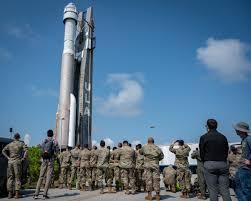
Together, these components highlight the progress and potential of human space exploration, driven by both government agencies and commercial entities, and underscore the collaborative spirit essential for overcoming the challenges of exploring the final frontier.
#International Space Station#Cape Canaveral Naval Space Force Station#propulsion system#Boeing Starliner mission a milestone
1 note
·
View note
Text
China’s Aerospace Industry: A Deep Dive
The Expansion of China’s Aerospace Industry

China’s aerospace industry has undergone a transformative journey over the past few decades, transitioning from a largely import-dependent sector to a robust and increasingly self-sufficient powerhouse. This evolution is characterized by significant government investment, strategic policy frameworks, and a focused push towards technological innovation. China's aerospace ambitions are part of its broader national strategy to ascend as a global leader in high-tech industries and reduce its reliance on foreign technologies.
Aviation and Aerospace Equipment and Technologies
China’s advancements in aviation and aerospace equipment and technologies span several domains, including commercial aviation, military aviation, and space exploration. The comprehensive development in these areas underscores China's commitment to becoming a dominant force in global aerospace.
Commercial Aviation:
China’s commercial aviation sector has made notable strides, with the Commercial Aircraft Corporation of China (COMAC) playing a pivotal role. COMAC’s C919, a narrow-body jet, is designed to rival the Airbus A320 and Boeing 737. The successful development and eventual commercial deployment of the C919 signify China’s growing prowess in manufacturing large-scale, complex aircraft. Furthermore, the joint development of the CR929 wide-body aircraft with Russia’s United Aircraft Corporation (UAC) illustrates China’s ambitions to penetrate the international aviation market.
Military Aviation:
In military aviation, China has made significant progress with the development of advanced fighter jets such as the Chengdu J-20 and the Shenyang J-31. The J-20, a fifth-generation stealth fighter, showcases China’s advancements in stealth technology and combat capabilities. The J-31, designed for export markets, further exemplifies China’s capability to produce competitive military aircraft. These developments are part of a broader strategy to modernize the People's Liberation Army (PLA) and enhance China's defense capabilities.
Space Exploration:
China’s space exploration achievements are particularly impressive. The successful execution of the Chang'e lunar missions, the Tianwen Mars mission, and the construction of the Tiangong space station underscore China’s capabilities in deep space exploration and long-term space habitation. The BeiDou Navigation Satellite System, a global satellite navigation system, demonstrates China’s commitment to developing independent and advanced space technologies, reducing its reliance on the U.S.-based Global Positioning System (GPS).
Aircraft and Aerospace Engines
The development of indigenous aircraft and aerospace engines is a critical aspect of China’s aerospace strategy. Historically dependent on foreign suppliers, China has prioritized the development of domestic engine technologies to ensure self-reliance and technological sovereignty.
Aircraft Engines:
China’s efforts to develop indigenous aircraft engines are exemplified by the CJ-1000A engine, which powers the COMAC C919. This engine is a crucial step towards achieving self-reliance in the commercial aviation sector. In the military domain, the WS-10 and WS-15 engines, developed by the Shenyang Liming Aircraft Engine Company, are integral to China’s advanced fighter jets, such as the J-20. These engines are designed to enhance performance, reliability, and operational capabilities, reducing the need for foreign engines and enhancing China's strategic autonomy.
Aerospace Engines:
China has also made significant strides in developing aerospace engines, particularly with the YF series of rocket engines. The YF-100 and YF-77 engines are vital components of the Long March rocket family, which is used for launching satellites, crewed missions, and interplanetary probes. These engines have enabled China to achieve numerous milestones in space exploration, including lunar landings and Mars missions.
China’s Decision to Implement New Export Controls on Aviation and Aerospace Equipment
In December 2023, China announced the implementation of new export controls on aviation and aerospace equipment. This decision reflects a strategic move to protect national security, safeguard technological advancements, and enhance China’s global competitiveness.
Rationale Behind the Export Controls:
The primary rationale for the new export controls is to prevent the transfer of sensitive technologies that could undermine China’s national security. By controlling the export of advanced aviation and aerospace technologies, China aims to maintain a strategic advantage and prevent these technologies from being used in ways that could threaten its interests. This decision is also a response to similar measures imposed by other countries, particularly the United States, which has enacted strict export controls on high-tech goods and technology transfers to China. By introducing its own controls, China seeks to protect its technological sovereignty and create a more balanced playing field.
Impact on the Global Aerospace Industry:
The new export controls are expected to have significant implications for the global aerospace industry. Countries and companies that rely on Chinese aviation and aerospace equipment may face challenges in accessing these technologies, leading to potential delays in projects, increased costs, and a push to find alternative suppliers. For international partners and competitors, China’s export controls could accelerate efforts to develop indigenous technologies and reduce reliance on Chinese imports. This shift could foster innovation and competition, leading to a more diversified and resilient global aerospace supply chain.
Domestic Implications:
Domestically, the new export controls are likely to bolster China’s efforts to enhance self-reliance and innovation within its aerospace industry. By limiting the outflow of critical technologies, China aims to ensure that its technological advancements benefit its own economic and strategic interests. These controls could also encourage foreign companies to establish joint ventures and partnerships with Chinese firms, fostering technology transfer and local production. This approach aligns with China’s broader industrial policies, which emphasize domestic innovation and technological self-sufficiency.
Conclusion
China’s aerospace industry stands at a pivotal juncture, marked by significant achievements and strategic shifts. The country’s advancements in aviation and aerospace equipment and technologies underscore its ambition to be a global leader in these fields. The focus on indigenous engine development highlights the importance of self-reliance in critical technologies. The decision to implement new export controls on aviation and aerospace equipment reflects a strategic move to protect national security, safeguard technological advancements, and enhance global competitiveness.

As China continues to invest in and develop its aerospace capabilities, the global landscape of aviation and aerospace is likely to see profound changes. The interplay between competition and collaboration will shape the future of this dynamic and strategically important industry. With its ambitious goals and strategic initiatives, China is poised to play a leading role in the aerospace sector, influencing global trends and setting new benchmarks in technological innovation and industrial growth.
#China’s aerospace industry#aviation and aerospace equipment and technologies#Aircraft and aerospace engines#China’s decision to implement new export controls on aviation and aerospace equipment
0 notes
Text
China's Aerospace Industry: A Comprehensive Overview
The Growth of China's Aerospace Industry
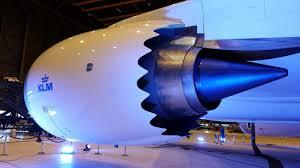
China's aerospace industry has seen remarkable growth over the past few decades, evolving from a nascent sector into a major global player. The industry's rapid development has been driven by substantial investments, government support, and a strategic focus on technological innovation and self-reliance. This transformation is part of China's broader strategy to become a world leader in high-tech industries and to reduce dependence on foreign technology.
Aviation and Aerospace Equipment and Technologies
China's advancements in aviation and aerospace equipment and technologies have been significant. The country's efforts encompass a wide range of areas including commercial aviation, military aviation, and space exploration.
Commercial Aviation:
China has made substantial progress in commercial aviation, particularly through its flagship project, the COMAC C919. The C919 is a narrow-body jet designed to compete with the Airbus A320 and Boeing 737. The development of the C919 marks a significant milestone for China, demonstrating its capability to produce large, complex aircraft. In addition to the C919, China is also developing the CR929 in collaboration with Russia, aiming to compete in the wide-body aircraft market.
Military Aviation:
In the realm of military aviation, China has developed advanced fighter jets such as the Chengdu J-20, a fifth-generation stealth fighter that represents a leap forward in terms of capability and technology. The Shenyang J-31 is another example, intended to provide China with a competitive edge in the international arms market. These developments are part of China’s broader strategy to modernize its military forces and enhance its defense capabilities.
Space Exploration:
China's achievements in space exploration are equally impressive. The country has successfully launched crewed missions, landed rovers on the Moon and Mars, and developed its own space station, Tiangong. The Chang'e lunar exploration program and the Tianwen Mars mission highlight China's ambitions and capabilities in deep space exploration. The BeiDou Navigation Satellite System, which provides global navigation services, is another testament to China's growing prowess in space technology.
Aircraft and Aerospace Engines
The development of aircraft and aerospace engines is a critical component of China's aerospace strategy. Historically, China relied heavily on foreign-made engines, but recent years have seen a concerted effort to develop indigenous engine technologies.
Aircraft Engines:
The CJ-1000A engine, designed for the C919, represents China’s push towards self-reliance in commercial aviation. Similarly, the WS-10 and WS-15 engines are critical for China's military aviation, powering its advanced fighter jets. These engines not only enhance China’s aerospace capabilities but also reduce its dependency on foreign suppliers, particularly in the face of international sanctions and export controls.
Aerospace Engines:
In the field of aerospace engines, China has made strides with the development of the YF series of rocket engines. These engines power the Long March rockets, which are used for launching satellites, crewed missions, and interplanetary exploration. The YF-100 and YF-77 engines, in particular, have been instrumental in the success of China’s space missions.
China’s Decision to Implement New Export Controls on Aviation and Aerospace Equipment
In December 2023, China announced new export controls on aviation and aerospace equipment, signaling a significant shift in its trade and technology policies. These controls are part of a broader strategy to protect national security, safeguard technological advancements, and enhance China's global competitiveness.
Rationale Behind the Export Controls:
The primary rationale for the new export controls is to prevent the transfer of sensitive technologies that could undermine China’s national security. By controlling the export of advanced aviation and aerospace technologies, China aims to maintain a strategic advantage and prevent these technologies from being used against its interests.
Moreover, these controls are also a response to similar measures imposed by other countries. The United States, for example, has implemented strict export controls on high-tech goods and technology transfers to China. By introducing its own controls, China seeks to create a level playing field and protect its technological sovereignty.
Impact on the Global Aerospace Industry:
The implementation of new export controls by China is likely to have significant implications for the global aerospace industry. Countries and companies that rely on Chinese aviation and aerospace equipment may face challenges in accessing these technologies. This could lead to delays in projects, increased costs, and a push for alternative suppliers.
For international partners and competitors, China’s export controls could accelerate efforts to develop indigenous technologies and reduce reliance on Chinese imports. This shift could foster innovation and competition, potentially leading to a more diversified and resilient global aerospace supply chain.
Domestic Implications:
Domestically, the new export controls are expected to bolster China’s efforts to enhance self-reliance and innovation within its aerospace industry. By limiting the outflow of critical technologies, China aims to ensure that its technological advancements benefit its own economic and strategic interests first and foremost.
Additionally, these controls could encourage foreign companies to establish joint ventures and partnerships with Chinese firms, fostering technology transfer and local production. This approach aligns with China’s broader industrial policies, which emphasize domestic innovation and technological self-sufficiency.
Conclusion
China's aerospace industry stands at a pivotal juncture, marked by significant achievements and strategic shifts. The development of advanced aviation and aerospace equipment and technologies underscores China’s ambition to be a global leader in these fields. The focus on indigenous engine development highlights the importance of self-reliance in critical technologies.
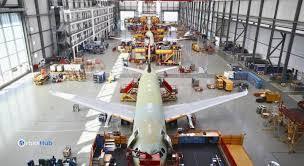
The decision to implement new export controls on aviation and aerospace equipment reflects a strategic move to protect national security, safeguard technological advancements, and enhance global competitiveness. While these controls pose challenges for international partners and competitors, they also present opportunities for innovation and diversification within the global aerospace industry.
As China continues to invest in and develop its aerospace capabilities, the global landscape of aviation and aerospace is likely to see profound changes. The interplay between competition and collaboration will shape the future of this dynamic and strategically important industry.
#China’s aerospace industry#aviation and aerospace equipment and technologies#Aircraft and aerospace engines#China’s decision to implement new export controls on aviation and aerospace equipment
0 notes
Text
Fuel-Efficient Turbofans: Revolutionizing Modern Aviation
Introduction
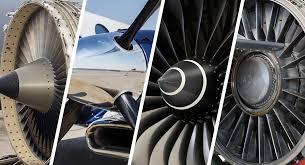
The aviation industry is in a constant quest for efficiency, reliability, and environmental sustainability. Central to this mission are fuel-efficient turbofan engines, which represent the forefront of modern aerospace engineering. These engines are integral to the performance of contemporary aircraft, including the iconic Airbus A380. This article delves into the intricate workings of fuel-efficient turbofans, the evolution of gas turbine technology, and the various types of aircraft engines that power our skies.
Fuel-Efficient Turbofans: The Heart of Modern Aircraft
Fuel-efficient turbofan engines are designed to maximize thrust while minimizing fuel consumption and emissions. Unlike traditional turbojet engines, which produce thrust solely through the high-speed expulsion of exhaust gases, turbofans generate most of their thrust through a large fan at the front of the engine.
Key Components and Functionality
Fan: The large fan at the front of the engine draws in a significant amount of air. A portion of this air is directed through the core of the engine for combustion, while the rest bypasses the core, providing additional thrust. This bypassed air helps reduce fuel consumption and noise.
Compressor: The compressor increases the pressure of the incoming air before it enters the combustion chamber. Modern turbofans use multi-stage compressors to achieve high pressure ratios, which improve efficiency.
Combustion Chamber: In this section, fuel is mixed with the compressed air and ignited, producing high-temperature, high-pressure gases.
Turbine: The turbine extracts energy from the high-pressure gases produced in the combustion chamber to drive the fan and compressors. It is divided into high-pressure and low-pressure sections, each playing a critical role in the engine’s operation.
Bypass Duct: This duct allows the bypassed air to flow around the engine core, contributing to the overall thrust and improving fuel efficiency.
The Evolution of Gas Turbine Technology
Gas turbine engines have undergone significant advancements since their inception, evolving from simple turbojets to sophisticated high-bypass turbofans. This evolution has been driven by the need for greater fuel efficiency, reliability, and environmental performance.
Historical Development
Turbojets: The earliest jet engines, turbojets, were developed during World War II. They are characterized by their simple design, where all incoming air passes through the combustion chamber. Turbojets are efficient at high speeds but consume more fuel compared to modern engines.
Low-Bypass Turbofans: Post-World War II, engineers introduced turbofans with a low bypass ratio, where a portion of the air bypasses the core engine. This design improved fuel efficiency and reduced noise.
High-Bypass Turbofans: Modern commercial aviation relies on high-bypass turbofans, where a significant amount of air bypasses the core engine. This design achieves superior fuel efficiency and lower emissions, making it the standard for contemporary jetliners.
Technological Innovations
Materials: Advances in materials, such as composites and high-temperature alloys, have allowed engines to operate at higher temperatures and pressures, improving efficiency.
Aerodynamics: Improved aerodynamic designs, including blade shapes and fan configurations, have reduced drag and enhanced the overall performance of turbofan engines.
Noise Reduction: Innovations in acoustic technology and engine design have significantly reduced noise levels, making modern turbofans quieter and more environmentally friendly.
Types of Aircraft Engines
Aircraft engines are diverse, each type tailored to specific operational requirements and aircraft sizes. The main types include:
Turbojets
Turbojets are the simplest form of jet engines. They operate by compressing incoming air, mixing it with fuel, igniting the mixture, and expelling the exhaust gases at high speed to generate thrust. Turbojets are efficient at high speeds and altitudes but are less fuel-efficient compared to other engine types.
Turbofans
Turbofans are the most common engines used in commercial aviation today. They come in two main varieties:
Low-Bypass Turbofans: Suitable for military and high-speed aircraft, these engines provide a balance between speed and efficiency.
High-Bypass Turbofans: Used in commercial airliners, these engines offer superior fuel efficiency by bypassing a significant portion of air around the engine core. This design makes them ideal for long-haul flights and large passenger jets.
Turboprops
Turboprops combine the principles of jet propulsion with propeller-driven thrust. They are commonly used in regional and small commuter aircraft. A gas turbine engine drives a propeller through a reduction gearbox. Turboprops are highly efficient at lower speeds and shorter distances, making them suitable for regional flights.
Piston Engines
Piston engines are similar to those found in cars. They operate by igniting an air-fuel mixture within cylinders to drive pistons, which in turn rotate a propeller. Piston engines are typically used in small, general aviation aircraft and are known for their simplicity and reliability.
The Airbus A380: A Marvel of Modern Engineering
The Airbus A380, the world’s largest passenger airliner, exemplifies the pinnacle of aviation technology and engineering excellence. Equipped with four advanced turbofan engines, the A380 is designed to offer unparalleled capacity, range, and fuel efficiency.
Engine Technology
The A380 typically uses either the Rolls-Royce Trent 900 or the Engine Alliance GP7200 engines. Both engines are high-bypass turbofans, incorporating the latest advancements in materials, aerodynamics, and noise reduction.
Rolls-Royce Trent 900: This engine features a three-shaft design, providing high efficiency and reliability. Advanced materials and aerodynamic improvements contribute to its exceptional performance and fuel economy.
Engine Alliance GP7200: A product of a collaboration between General Electric and Pratt & Whitney, the GP7200 combines the best technologies from both companies. It offers high thrust, fuel efficiency, and reduced maintenance costs.
Environmental Impact
The A380’s engines are designed to meet stringent environmental standards. They produce lower emissions and noise levels compared to previous-generation engines, aligning with global efforts to reduce the aviation industry’s environmental footprint.
Operational Efficiency
The A380 can carry up to 853 passengers in an all-economy configuration, making it ideal for high-density routes. Its fuel-efficient engines enable it to cover long distances with fewer refueling stops, reducing operational costs and enhancing route flexibility.
Conclusion

The development of fuel-efficient turbofan engines has revolutionized modern aviation, enabling aircraft to fly farther, faster, and with greater environmental responsibility. The Airbus A380 stands as a testament to these advancements, showcasing the capabilities of cutting-edge gas turbine technology. As the aviation industry continues to evolve, the pursuit of efficiency, sustainability, and innovation remains at the forefront, promising a future where air travel is more economical and environmentally friendly than ever before.
0 notes
Text
Exploring the Efficiency of Fuel-Efficient Turbofans: A Closer Look at Airbus A380 and Gas Turbine Engines
Introduction:
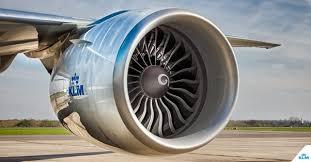
In the dynamic landscape of aviation, the quest for fuel efficiency stands as a paramount objective. One of the pivotal components contributing to this endeavor is the development of fuel-efficient turbofan engines. Among the giants of the sky, the Airbus A380 serves as a prime example, embodying the culmination of advancements in gas turbine technology. This exploration delves into the intricate workings of fuel-efficient turbofans, their significance in the aviation industry, and the notable role played by the Airbus A380 in advancing this domain.
Fuel-Efficient Turbofans: Revolutionizing Aviation Propulsion
Fuel-efficient turbofan engines represent a pinnacle of engineering ingenuity, balancing thrust generation with optimal fuel consumption. Unlike traditional turbojets, turbofans incorporate a large fan at the front of the engine, which significantly contributes to propulsion by bypassing a portion of air around the core engine. This bypass airflow enhances efficiency by providing a greater mass of air to be accelerated, resulting in improved fuel economy and reduced emissions.
Key Components and Functionality of Fuel-Efficient Turbofans:
Core Engine: At the heart of a turbofan lies the core engine, where the combustion of fuel and air occurs, driving the turbine to generate power.
Fan Section: Positioned at the front of the engine, the fan draws in vast quantities of air, part of which bypasses the core, while the rest is directed into the engine for combustion.
Bypass Duct: This duct channels the airflow that bypasses the core engine, contributing to the majority of thrust production in modern high-bypass ratio turbofans.
Low-Pressure and High-Pressure Compressors: These components compress incoming air before it enters the combustion chamber, increasing efficiency by raising the pressure and temperature of the air-fuel mixture.
The Evolution of Fuel-Efficient Turbofans: Advancements in Gas Turbine Technology
Over the decades, gas turbine engines have undergone significant evolution, driven by relentless innovation and engineering breakthroughs. From early turbojets to sophisticated high-bypass turbofans, each iteration has brought forth improvements in efficiency, reliability, and environmental sustainability.
Types of Aircraft Engines:
Aircraft engines encompass a variety of types, from the classic turbojets and fuel-efficient turbofans to versatile turboprops and reliable piston engines, each tailored to suit different aircraft sizes, missions, and performance requirements.
Turbojets: Characterized by their simple design, turbojets propel aircraft by compressing incoming air, mixing it with fuel for combustion, and expelling the resulting exhaust gases at high velocity to generate thrust.
Turbofans: Building upon the principles of turbojets, turbofan engines feature a large fan at the front that accelerates a portion of incoming air, bypassing the core engine to enhance efficiency.
Turboprops: Commonly found in smaller aircraft and regional airliners, turboprop engines drive a propeller directly through a gearbox, utilizing the exhaust gases from the turbine for propulsion.
Piston Engines: Predominantly used in light aircraft and general aviation, piston engines operate by igniting an air-fuel mixture within cylinders to drive pistons, which in turn rotate the propeller.
The Airbus A380: A Testament to Technological Excellence
As the world's largest passenger airliner, the Airbus A380 stands as a testament to the culmination of technological excellence in commercial aviation. Equipped with four fuel-efficient turbofan engines, typically variants of the Rolls-Royce Trent or Engine Alliance GP7200, the A380 combines unparalleled capacity with remarkable fuel efficiency.
The A380's adoption of fuel-efficient turbofans underscores Airbus's commitment to sustainability and operational cost-effectiveness. With its advanced aerodynamics, composite materials, and state-of-the-art engine technology, the A380 redefines long-haul travel by offering unmatched comfort, range, and efficiency.
Conclusion:
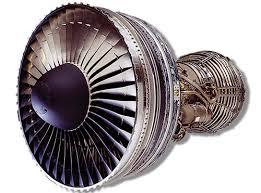
In the realm of aviation propulsion, fuel-efficient turbofan engines represent a cornerstone of progress, driving advancements in efficiency, performance, and environmental responsibility. From the engineering marvels of the Airbus A380 to the continuous evolution of gas turbine technology, the quest for fuel efficiency remains an enduring pursuit, shaping the future of flight for generations to come.
1 note
·
View note